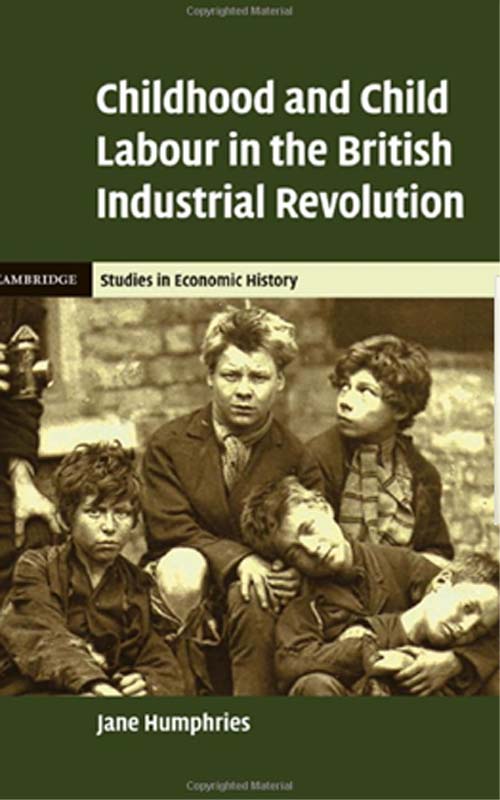Childhood and Child Labour in the British Industrial Revolution
Review

Childhood and Child Labour in the British Industrial Revolution by Jane Humphries
(Studies in Economic History, Cambridge University Press), 2010
439pp., £60, hard, ISBN 978-0-521-84756-8
In Kirkheaton churchyard near Huddersfield there is a 15 foot stone obelisk topped by a flame that commemorates ‘The dreadful fate of 17 children who fell unhappy victims to a raging fire at Mr Atkinson's factory at Colne Bridge, February 14th 1818.' All the dead were girls; the youngest nine, the oldest eighteen. The fire started when about 5 am a boy aged ten was sent downstairs to the ground floor card room to collect some cotton rovings. Instead of taking a lamp, he took a candle that ignited the cotton waste and the fire spread quickly through the factory that became a raging inferno. The children were trapped on the top floor when the staircase collapsed. The entire factory was destroyed in less than thirty minutes and the boy who had inadvertently started the fire was the last person to leave the building alive. It is not surprising that child labour and the need to regulate it became a national issue in the early 1830s. Eric Hopkins Childhood Transformed: Working Class Children in Nineteenth-Century England, (Routledge), 1994, Pamela Horn Children's Work and Welfare 1780-1880s, (Macmillan), 1994 and Peter Kirby Child labour in Britain, 1750-1870, (Palgrave), 2003, each provide valuable insights into children's work and how and why it changed but, until the publication of this excellent and very important study, we have lacked a detailed account of working-class childhood during the industrial revolution.
What makes this book important is its use of over 600 autobiographies written by working men in the eighteenth and nineteenth centuries. This allows Jane Humphries to examine features of working-class childhood that conventional sources tend not to detail. The result is revised estimates of when children started work, the question of social mobility, the nature and extent of apprenticeship and the duration of schooling. She shows that the apparent increase in child labour during the classic period of industrialisation between 1790 and 1850, entrenched in traditional and modern sectors of the economy, was caused by mechanisation and division of labour. Child labour was far more extensive than some historians have previously argued with Peter Kirby, for example, arguing that the use of very young children was ‘never widespread'. In fact, if very young meant below 10, then it was far from rare with the children of factory workers and outworkers, for example, all starting work well below that age. She also shows that the existence of fatherless and large families, a common feature of societies where fertility and mortality were both high, often meant that children were crucial as supports for mothers trying to hold together their families. This reinforces the question of how children and women, who stood increasingly at the margins of the economy, were able to survive in living conditions that were often appalling and working conditions that were exploitative, dangerous and often traumatic. By a deft combination of quantitative analysis and qualitative sources, a methodology examined in the second chapter, Jane Humphries has effectively reconstructed the conditions in which the metamorphosis from childhood to adulthood was tentatively achieved. In doing so, she extends the discussion of childhood beyond the family and household economy into consideration of family relationships and wider kin structures. By the mid-nineteenth century, child labour was already in decline with children born between 1851 and 1871 starting work later than those born earlier in the century and spending longer in schooling in some form.
This book was a joy to read even. Some of its findings are shocking to the modern mind and remind us that child exploitation remains a global problem in those societies where poverty and large families mean that children retain their crucial economic role. It is full of excellent examples that teachers could use in the classroom to enliven what can sometimes be a rather staid discussion of factory legislation. I hope that a paperback version will follow quickly.

